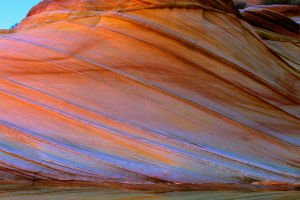Hey Lykkers! The Quiver Tree, known locally as the Kokerboom, stands tall and proud against the arid backdrop of the Namibian Desert, casting a surreal and almost otherworldly silhouette.
A symbol of resilience and endurance, this tree is one of the most iconic plants in southern Africa. Its unique shape, hardy nature, and association with ancient cultural practices make it a fascinating sight for any traveler exploring Namibia's rugged landscapes.
Getting to the Quiver Tree Forest
1. By Car
The easiest way to reach the Quiver Tree Forest is by renting a car and driving from Windhoek, Namibia’s capital. The forest is about a 500 km (6-hour) drive south on the B1 highway. The roads are well-maintained, and a standard 2WD vehicle is sufficient for the journey.
2. By Bus
For those without a car, there are long-distance buses that travel between Windhoek and Keetmanshoop, from where you can arrange a taxi or shuttle to the Quiver Tree Forest. Bus tickets cost around NAD 300 ($20) one way.
A Desert Icon
1. The Tree of Legends
The Quiver Tree is not your average tree. In fact, it’s a species of aloe (Aloe dichotoma) that has evolved to survive the harsh conditions of the Namibian Desert. Its name comes from the San people, who once used the hollowed-out branches of the tree to craft quivers for their arrows. This tree has a rich history intertwined with the region’s indigenous culture, standing as a living relic of a time when survival in the desert depended on ingenuity.
2. Adapted for Survival
With thick, waxy leaves that minimize water loss, and a trunk that stores moisture, the Quiver Tree thrives where many other plants would perish. Its large branches reach skyward, resembling the arms of a candelabra, creating a stunning contrast against the deep blues of the African sky. In the early mornings and late afternoons, these trees glow in golden hues, making for a photographer’s paradise.
Where to Find Quiver Trees
The best place to witness the magnificence of the Quiver Tree is the Quiver Tree Forest, located near the town of Keetmanshoop in southern Namibia. This site, designated as a national monument, is home to over 250 Quiver Trees, many of which are over 200 years old. The forest is particularly magical during sunset and sunrise when the light casts long shadows across the desert floor.
Entry to the Quiver Tree Forest costs around NAD 100 (about $7) per person, and it’s open daily from sunrise to sunset.
Accommodation Near Quiver Tree Forest
For those wishing to stay close to the Quiver Tree Forest and soak in the desert’s beauty at night, there are several lodging options available, ranging from rustic campsites to more comfortable guesthouses.
1. Quiver Tree Forest Rest Camp: Located right next to the forest, this camp offers a range of accommodation options including basic rooms and camping sites. It’s perfect for travelers who want to stay overnight and experience the star-filled skies of the desert. Prices start from NAD 250 ($17) per person for camping, and NAD 500 ($34) for rooms.
Dining Options
While dining options in this remote region are limited, there are a few good spots to enjoy local flavors.
1. The Central Lodge Restaurant: This restaurant, located within the Central Lodge in Keetmanshoop, offers a mix of traditional Namibian dishes and international fare. It’s a cozy spot to relax after a day exploring the desert. Expect to pay around NAD 150 ($10) for a meal.
2. Schützenhaus Guesthouse: Another popular option in Keetmanshoop, Schützenhaus offers hearty meals with a focus on grilled meats and local produce. Meals here start at around NAD 120 ($8).
Best Time to Visit
The best time to visit the Quiver Tree Forest and the surrounding desert landscape is during Namibia’s cooler months, between May and September. Temperatures during this time are more comfortable for exploring, and the clear skies offer spectacular stargazing opportunities. However, if you’re visiting in summer, be prepared for intense heat, especially during the midday hours.
Useful Information
Entry Fee: NAD 100 ($7) per person
Opening Hours: Daily from sunrise to sunset
Best Time to Visit: May to September for cooler temperatures and clear skies
The Quiver Tree Forest is not just a destination; it’s an experience that brings you closer to the raw, unfiltered beauty of the Namibian Desert. Whether you’re a nature lover, photographer, or simply someone seeking an adventure off the beaten path, the Quiver Tree offers an unforgettable glimpse into the resilience of life in one of the world’s harshest environments.
Witness the Breathtaking Photography of Quiver Trees in Namibia, Africa!
video by Adam Gibbs


